Robotics Education Journal
 05/04/2020
05/04/2020 The UK Defence Science and Technology Laboratory (Dstl) has awarded a contract to QinetiQ to lead phase five of the Maritime Autonomous Platform Exploitation (MAPLE) project. MAPLE will assist British warships in the integration of unmanned vehicles and payloads that best fit specific mission requirements. Objectives include enabling “the use of multiple MAPLE systems in a force, as well as the integrated command and control of effector systems deployed from maritime autonomous systems.”
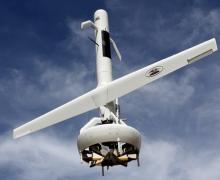 05/01/2020
05/01/2020 Before manned aircraft enter hostile airspace, three different types of drones – long-range, tactical, and miniaturized – will rip open the seams in the enemy’s defenses. Long before human pilots or troops are deployed in battle zones, drones will scout out enemy defenses, neutralize their radars and strike vital points.
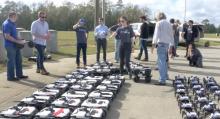 04/28/2020
04/28/2020 DARPA announced 13 April that it had issued 9 new drone contracts to companies developing drone swarm tech. DARPA is stimulating research through its OFFSET (Offensive Swarm-Enabled Tactics) program. The program works in five main areas: physical test bed, swarm tactics, swarm autonomy, human-swarm teaming, and virtual environments. The agency seeks to encourage rapid innovation in one or more of those areas. “The nine awards mark the fifth such swarm sprint, with this one focused on swarm tactics and physical test beds in an urban environment.”
 04/26/2020
04/26/2020 On 25 April, DefenseOne.com posted a wide-ranging article on Chinese history and current technology initiatives penned by H.R. MCMASTER. The piece first appeared in The Atlantic. The analysis uses the concept of “strategic empathy” to characterize the Chinese forward-looking thought process, from China’s perspective, on developing its resources and world position. We recommend the article because Western robotics and AI technologies comprise an important competitive segment of the world’s technological future.
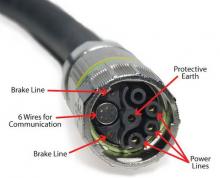 04/25/2020
04/25/2020 A key robot assisting with firefighting at the Notre Dame conflagration was the Shark Robotics Colossus. Its fixtures included LEMO connectors. A quick look at the complexity of these connectors illuminates the many functions of plug & play connectors in modern robots. These range from power and electronic data communications to brake control. Significant engineering goes into their design.
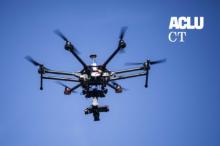 04/24/2020
04/24/2020 The plan by Westport, CT, police to use drones to spot potential covid-19 sufferers from afar has been grounded. Westport Police Chief Foti Koskinas said that he was thankful for the opportunity to participate but wanted to be responsive to citizens' concerns. Many had raised privacy concerns after the town announced the partnership with Draganfly.
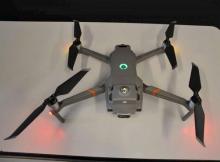 04/24/2020
04/24/2020 The Westport News reported on Tuesday, April 21, that Westport, CT, is the first town in CT to deploy drones to fight the coronavirus. “This pandemic has opened up a new frontier and urgent need for the use of drones,” Police Chief Foti Koskinas said Tuesday. “Using drones remains a go-to technology for reaching remote areas with little to no manpower required. Because of this technology, our officers will have the information and quality data they need to make the best decision in any given situation.”
 04/21/2020
04/21/2020 Wired magazine has posted a terrific summary of robotics, soup to nuts, that we recommend reviewing. It includes historical background, basics on terminology, an overview of sensors, actuators and AI, and a lot more.
 04/17/2020
04/17/2020 Khalil Najafi, engineering and computer science professor at the University of Michigan, reports that “Our gyroscope is 10,000 times more accurate but only 10 times more expensive than gyroscopes used in your typical cell phones…” The new gyro design is actually a resonator made nearly-pure glass that can vibrate for extended periods. The new gyro enables use of high-precision inertial navigation and may find applications ranging from field use by the military to warehouse robotics.
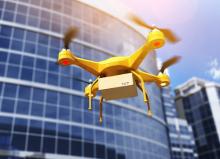 04/15/2020
04/15/2020 The commercial drone industry will continue its rapid expansion with North America showing the largest unit demand by 2023, when it will represent 32.3% of the market, Frost & Sullivan predicted. The firm estimated that demand will reach 29.1% in APAC and 23.3% in Europe by that time. “With the surge in demand for commercial drones by the professional segment, unit shipment is estimated to rise at a compound annual growth rate (CAGR) of 4.5%, reaching 2.91 million units by 2023 from 2.44 million units in 2019.”
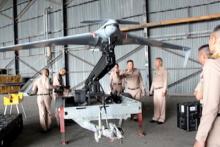 04/14/2020
04/14/2020 A new, updated 2nd edition of Ballard College’s renowned “The Drone Databook” has been released and can be downloaded at the link noted below. The updated report provides comprehensive information on inventory, products, R&D and export activities by country, and much more.
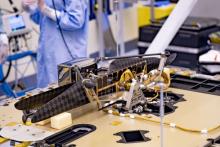 04/12/2020
04/12/2020 The Mars Perseverance rover mission is part of NASA's Mars Exploration Program, a long-term effort of robotic exploration of the Red Planet. The Mars Perseverance mission addresses high-priority science goals for Mars exploration, including key questions about the potential for life on Mars. The mission is timed for a launch opportunity in July/August 2020 when Earth and Mars are in good positions relative to each other for landing on Mars. The photo shows the mounting of the Mars coaxial helicopter.
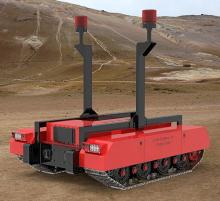 04/09/2020
04/09/2020 c-Link Systems, Inc., has introduced 7 new unmanned ground systems (UGVs), similar in planform to the original c-Link Forager but smaller in scale. c-Link was established in 1997 and has extensive background in robotics as well as industrial fiber optic communications and controls. The company initially developed its flagship Forager mining and search & rescue UGV, as well as the diminutive S&R Vole-Bot, in the late 1990s. The new UGVs are compact, upgraded systems that address challenges in distinct markets.
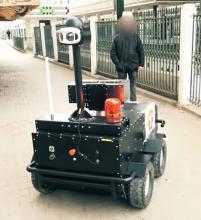 04/09/2020
04/09/2020 The BBC recently reported that unmanned ground vehicles (UGVs) are patrolling the streets in Tunisia to monitor and help enforce social isolation rules. These robots, called PGuards, are controlled by human operators remotely and ask pedestrians if they are adhering to the North African nation’s coronavirus restrictions.
 04/05/2020
04/05/2020 To address the surge in global demand for Titan systems, Citadel has expanded their manufacturing capabilities in San Diego, CA to support production of up to 50 Titan systems a month. The company uses U.S. suppliers with over 70% of components being sourced locally in Southern California in order to improve responsiveness when executing on urgent customer requests. The Citadel Defense Titan system, which is depicted as a virtual protective dome, detects approaching drones and classifies whether there is a single unit or a swarm, and reports this in real time to its operators, which can be military, governmental or commercial users. The Titan CUAS system autonomously clears the Warfighter's airspace, allowing them to focus on the mission at hand. The system uses sophisticated electronic countermeasures to induce an intruding drone to land or return to its home base. Enabling technologies include a mix of machine learning algorithms, artificial intelligence and “software defined hardware technology” that rapidly identify airborne intruders, reportedly before they pose a threat.
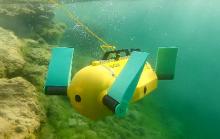 03/31/2020
03/31/2020 The highly-maneuverable, turtle-like robot called "U-CAT" was originally designed as a maritime archaeological tool to investigate, film and record data on shipwrecks. The name is an acronym that derives from a Facebook contest winner: Underwater Curious Archaeology Turtle. U-CAT is now showing great promise for salmon-farming in offshore Norwegian waters. Unlike human divers using thruster-driven robots, the U-CAT, apparently owing to its small size and slow movements, does not disturb farmed salmon.
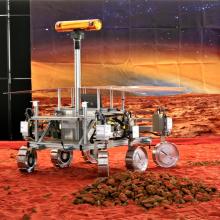 03/27/2020
03/27/2020 The 2022 mission of the ExoMars programme will deliver a European rover, Rosalind Franklin, and a Russian surface platform, Kazachok, to the surface of Mars. A Proton rocket will be used to launch the mission, which will arrive at Mars after a nine-month journey. The ExoMars rover will travel across the Martian surface to search for signs of life. It will collect samples with a drill and analyse them with next-generation instruments.
 03/25/2020
03/25/2020 Carnegie Mellon University
For immediate release
March 25, 2020
Pandemic Response Requires “Dull, Dirty, Dangerous” Jobs Suited For Robots
PITTSBURGH—Robots could perform some of the “dull, dirty and dangerous” jobs associated with combating the COVID-19 pandemic, but that would require many new capabilities not currently being funded or developed, an editorial in the journal Science Robotics argues. The editorial, published today and signed by leading academic researchers including Carnegie Mellon University’s Howie Choset, said robots conceivably could perform such tasks as disinfecting surfaces, taking temperatures of people in public areas or at ports of entry, providing social support for quarantined patients, collecting nasal and throat samples for testing, and enabling people to virtually attend conferences and exhibitions.
 03/23/2020
03/23/2020 The new NASA Mars rover, Perseverance, is being prepared for a launch to the red planet in the July-August window and will search for alien life. NASA staff are working hard to achieve this launch timeframe while taking all necessary precautions mandated in response to the coronavirus pandemic. If the launch misses the summer flight window, it will be bumped to 2022, as was the ESA/Russian ExoMars rover. As planned, a summer launch will see Perseverance land in February 2021 in Mars’s 45-kilometer-wide Jezero Crater.
 03/18/2020
03/18/2020 SAN DIEGO, CA, March 12, 2020 – Planck Aerosystems, Inc. (Planck Aero) was awarded a contract from the United States Air Force Research Lab for the development of guidance, navigation, and control solutions for small unmanned aircraft systems (sUAS) operating in challenging environments.
The contract was the result of the most recent solicitation from the Air Force’s Open Innovation topics of the competitive awards-based Small Business Innovation Research Program (SBIR), which is designed to enable small businesses to explore their technological potential and provides the incentive to profit from its commercialization.
 03/16/2020
03/16/2020 Just announced: “While schools across the United States are closed for self-quarantine and travel-based conventions have been cancelled, we’re inviting educators to participate in a hands-on opportunity to learn about microcontrollers and robotics — totally free, from the comfort of your home! This is your time to pick up an entire STEM curriculum!”
 03/10/2020
03/10/2020 STEM education (Science, Technology, Engineering and Math) are at the core of our nation’s standing in an ever-more technically competitive world. Maryville University Online recently published an insightful and timely piece, "Women in STEM: A Guide to Bridging the Gender Gap." Maryville University Online wants to help educate people on the benefits of a career in STEM fields as well as provide the resources necessary for women of all backgrounds to follow their passion and desired career path.
The guide provides information about the current gender and diversity gaps in STEM university studies and careers, reasons for those gaps, and strategies to help promote inclusivity in STEM-related industries. We highly recommend reviewing this pro-diversity and pro-STEM education program.
 03/08/2020
03/08/2020 Rosalind P. Walter, aka “Rosie the Riveter,” was a symbol of the grit and patriotism of the women workers in WW2, who spent long hours doing factory work because so many able-bodied men had entered the military and gone abroad to fight. Walter, an iconic WW2 national hero, passed on Wednesday, March 3rd, at the age of 95. She was a major philanthropist and PBS benefactor who supported “PBS News Hour”, “Great Performances”, “Nature”, Ken Burns documentaries and other notable productions.
During the war and afterward, the posters of Rosie were a source of national pride and emblematic of the sacrifices of thousands of women factory workers. Rosie and her fellow workers manufactured munitions, warships, aircraft and even robotic drones. Two other famous American icons, Marilyn Monroe and Ronald Reagan, were part of a remarkable story that also began in a WW2 drone factory.
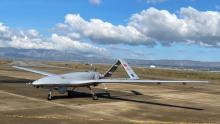 03/05/2020
03/05/2020 Elon Musk recently speculated that fighter pilots are likely to lose their jobs to robotic drones, and his view was immediately disputed. This controversy resonates to the longstanding question whether humans will remain competitive against computer-based intelligence. Meantime, three new large-scale drone prototypes recently appeared in the news.
 02/29/2020
02/29/2020 According to a fascinating story posted by Forbes Media, GuardBot and Aquiline Drones will partner on a variety of air, land and maritime applications ranging from firefighting and lake surveillance to property perimeter control. Barry Alexander, Aquiline’s CEO, was quoted by Forbes: “This futuristic solution, with unique edge characteristics, will enable new business models based on cooperation between different classes of autonomous machines.”
